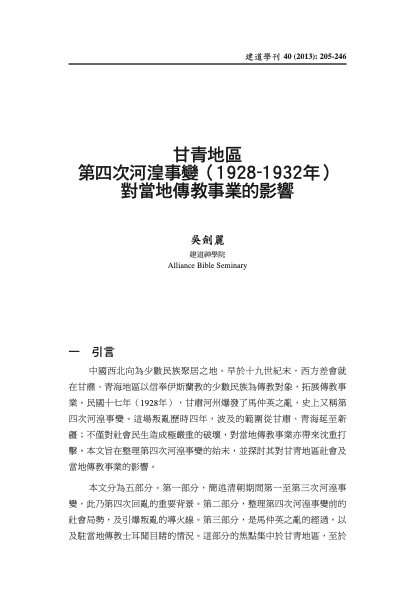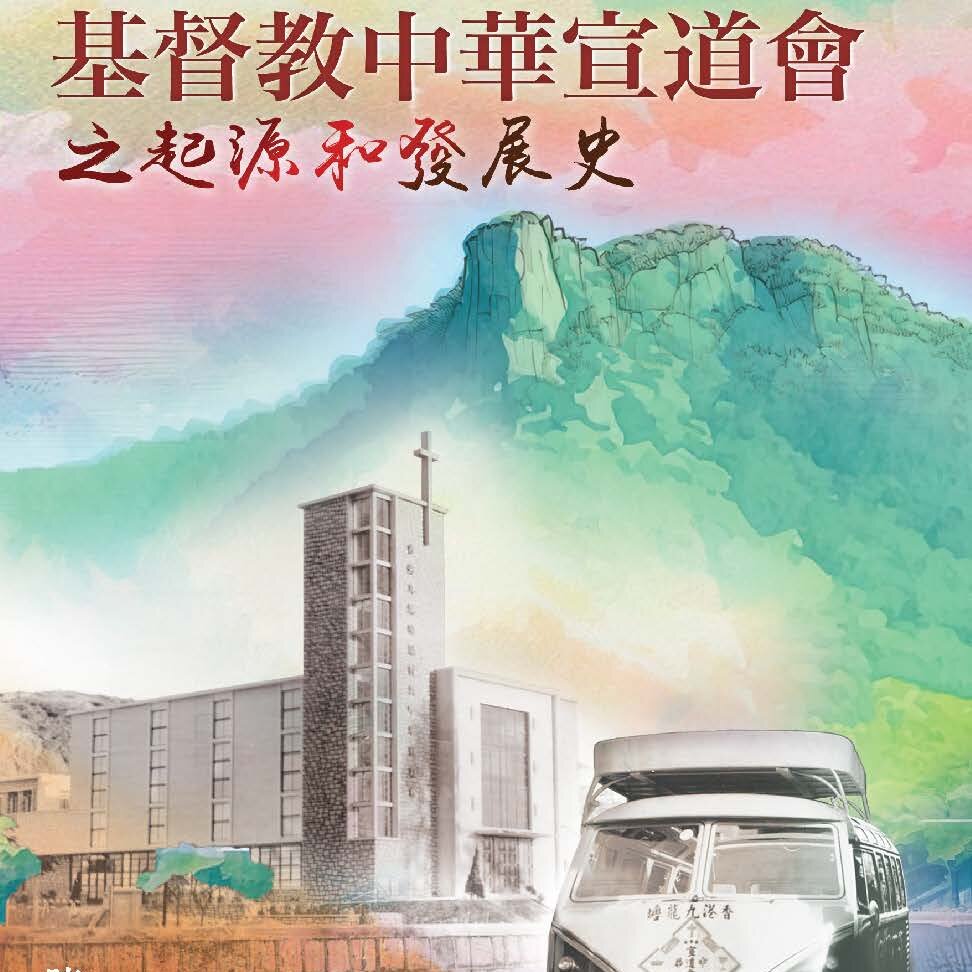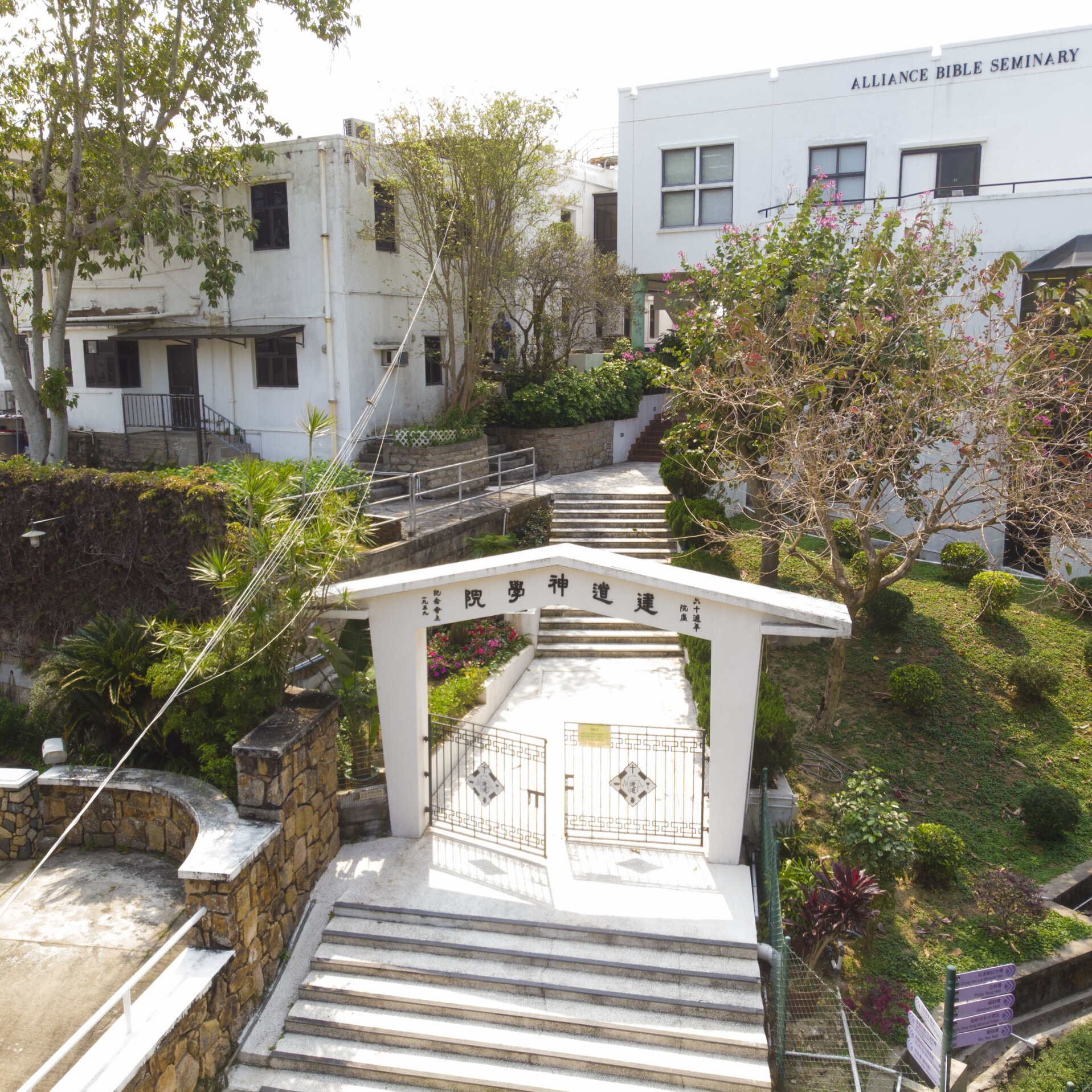甘青地區第四次河湟事變(1928-1932年)對當地傳教事業的影響/吳劍麗
吳劍麗
撮要
清朝以還,中國甘肅、青海地區爆發過三起回族叛變事件,被稱為回亂的溫床。民國十七年(1928年),回族馬仲英在甘肅河州起事,史稱第四次河湟事變。這場回亂歷時四年,波及的範圍從甘青地區延至新疆;不僅嚴重破壞了當地的社會民生,對西方差會一直艱苦經營的傳教事業,也帶來沈重打擊。本文旨在整理第四次河湟事變的始末,並從《友穆季刊》(The Quarterly Newsletter of the Society of Friends of the Moslems in China)所刊載的相關資料中,嘗試探討回亂對甘青地區社會及當地傳教事業造成的影響。
ABSTRACT
Moslem Rebellions kept breaking out in Kansu and Tsinghai provinces during the Ch’ing Dynasty. This district was known for a hotbed of riots accordingly. In 1928, Ma Chong-ying, a young Moslem General, rose in rebellion against the government in Hochow. It was known to history as the Fourth Moslem Rebellion in the Hehuang area. The event that lasted about 4 years reduced the people’s livelihood to destitution as well as the mission work which had been developed by the missionaries in the Northwest China. This article aimed to give an overview of the Moslem Rebellion, and to analyse the influences to the whole society and the mission work it brought about in the light of The Quarterly Newsletter of the Society of Friends of the Moslems in China.
原載於《建道學刊》40期(2013年7月),頁205-246。
作者簡介
吳劍麗
前兼任助理教授
Latest Articles
新手牧者研究計劃(三):新手牧者的身心靈狀態 / 盧慧儀
2025 年 11 月 19 日
個體與關係:滕近輝思想中「深化」的靈性觀 / 倪步曉
2025 年 11 月 18 日
香港九龍塘基督教中華宣道會之起源和發展史/陳智衡
2025 年 10 月 20 日
Highlights
[電子書]困境與抉擇:「建道研究中心30週年誌慶」跨學科研討會論文集/廖炳堂、倪步曉主編
2025 年 1 月 2 日
從梧州到長洲:建道神學院125年的挑戰與恩典 / 陳智衡
2023 年 10 月 1 日
微小教會的見證/高銘謙
2023 年 6 月 1 日








